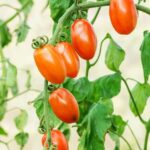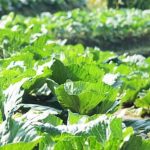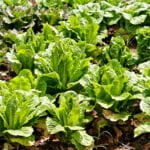Are you interested in growing your own vegetables at home but don’t have much outdoor space? Bucket gardening might be the solution for you. In this article, we will discuss the concept and benefits of bucket gardening, as well as provide a helpful list of vegetables that thrive in these container gardens.
Bucket gardening is a versatile and convenient way to grow vegetables, especially for those who have limited space or live in urban areas. It allows you to have a garden on a small balcony, patio, or even indoors. With the right buckets and care, you can enjoy the satisfaction of growing your own organic produce no matter where you live.
In the following sections, we will explore how to select the right buckets for your vegetable garden, including tips on size, material, and drainage. We will also discuss the importance of quality soil and fertilizers for bucket gardening, as well as essential tools and equipment needed for successful cultivation.
Finally, we will highlight a variety of vegetables that are well-suited for bucket gardens while providing step-by-step instructions for planting and maintenance. Whether you’re new to gardening or looking to expand your current setup, bucket gardening offers a convenient and rewarding way to grow your own fresh vegetables.
Selecting the Right Buckets
When it comes to bucket gardening, selecting the right buckets is crucial for the success of your vegetable garden. The first thing to consider is the size of the buckets. For most vegetables, a 5-gallon bucket is a good size to start with. This allows enough space for the root system to grow and for adequate moisture retention. However, larger plants like tomatoes may require even bigger containers.
In terms of material, plastic buckets are a popular choice for bucket gardening due to their affordability and durability. Make sure to choose food-grade plastic buckets to ensure they are safe for growing vegetables. Additionally, consider buckets with handles for easy transportation and maneuverability in your garden.
Proper drainage is essential for the health of your vegetable plants. Look for buckets with pre-drilled holes at the bottom to allow excess water to escape and prevent waterlogged soil, which can lead to root rot. If your chosen buckets do not have drainage holes, you can easily drill them yourself using a power drill.
Consider the aesthetic appeal as well – while not vital for plant growth, choosing visually appealing buckets can enhance the overall look of your vegetable garden. You might also want to paint or decorate your buckets to add a personal touch to your gardening space.
Now that you have some tips on how to choose the best buckets for your vegetable garden, it’s time to move on to preparing quality soil and fertilizers for successful bucket gardening.
Soil and Fertilizer Tips
When it comes to bucket gardening, the importance of quality soil and fertilizers cannot be overstated. Since vegetables grown in bucket gardens rely solely on the nutrients provided by their growing medium, it’s crucial to choose the right soil and fertilizers to ensure healthy plant growth and bountiful harvests. The good news is that there are plenty of options available for both soil and fertilizers that are specifically formulated for container gardening.
First and foremost, it’s essential to select a high-quality potting mix for your bucket garden. Look for a mix that is lightweight, well-draining, and rich in organic matter. Avoid using regular garden soil, as it tends to be too dense for containers and may not provide adequate aeration for your vegetable plants’ roots. Many reputable brands offer specially formulated potting mixes designed for container gardening, so be sure to check the label for this specific use.
In addition to quality potting mix, providing your vegetable plants with proper nutrition is vital for their overall health and productivity. Consider incorporating slow-release fertilizer pellets into the soil at the time of planting to supply a steady source of nutrients throughout the growing season.
Alternatively, you can opt for water-soluble fertilizers that can be applied during regular watering sessions. Whichever type of fertilizer you choose, make sure it is suitable for vegetable plants and follow the application instructions carefully.
It’s also worth mentioning that organic options are available for both potting mixes and fertilizers if you prefer a more natural approach to growing your vegetables. These products are typically free from synthetic chemicals and pesticides, making them an eco-friendly choice for environmentally conscious gardeners. Whether you go with conventional or organic options, investing in quality soil and fertilizers will undoubtedly contribute to a successful bucket gardening experience.
| Soil & Fertilizer Tips | Discussing Quality Soil & Fertilizer Importance |
|---|---|
| Select high-quality potting mix | Look for lightweight, well-draining mix rich in organic matter; avoid regular garden soil. |
| Provide proper nutrition | Incorporate slow-release fertilizer pellets or water-soluble fertilizers suitable for vegetable plants. |
| Consider organic options | Organic potting mixes and fertilizers are available as eco-friendly alternatives. |
Essential Tools and Equipment
When it comes to bucket gardening, having the right tools and equipment is essential for success. A well-equipped gardener will have an easier time planting, maintaining, and harvesting their vegetables. Here is a comprehensive list of tools and equipment needed for successful bucket gardening:
1. Trowels: A hand trowel is a must-have tool for any gardener. It is essential for digging small holes for planting seeds or transplanting seedlings into your buckets. Look for a trowel with a comfortable grip and a sturdy, durable blade.
2. Watering Cans: Since buckets are not directly connected to the ground, using a watering can is the most efficient way to water your vegetable plants. Look for a can with a narrow spout that allows you to easily direct the water at the base of each plant without causing unnecessary splashing.
3. Gloves: Protecting your hands while gardening is important, especially when dealing with soil, fertilizers, and potential pests. Invest in a good pair of gardening gloves that are durable and fit well to provide maximum protection without sacrificing dexterity.
4. Pruners/Scissors: Trimming back dead or overgrown foliage can be necessary in any garden, including bucket gardens. Keep a small pair of pruners or sharp scissors on hand to quickly and cleanly remove unwanted plant material without damaging the rest of the plant.
5. Labels/markers: Keeping track of what you’ve planted in each bucket is crucial for successful garden management. Use labels or markers to identify each vegetable plant so that you can monitor its growth progress and care needs more effectively.
By ensuring you have these essential tools and equipment on hand, you’ll be well-prepared to tackle all aspects of bucket gardening successfully with minimal hassle or frustration as you grow your list of vegetables for bucket gardening at home.
Best Vegetables for Bucket Gardening
When it comes to bucket gardening, the possibilities for what you can grow are nearly endless. However, certain vegetables tend to thrive particularly well in the confined space of a bucket, making them ideal choices for this type of gardening. Below is a comprehensive list of vegetables that are well-suited for bucket gardening, along with some tips on how to successfully grow them in your own home.
- Tomatoes: One of the most popular vegetables to grow in a bucket, tomatoes adapt well to container gardening and produce an abundant harvest. They require a large bucket due to their extensive root system, as well as a sturdy support system such as a trellis or stake to help the plants grow upwards.
- Peppers: Whether you prefer sweet bell peppers or spicy chili peppers, both varieties can thrive in a bucket garden. To ensure success, choose smaller varieties of peppers that are better suited for container gardening and provide adequate sunlight and regular watering for healthy plant growth.
- Carrots: Surprisingly, carrots can also thrive in a bucket garden if given proper care and attention. Select shorter carrot varieties that are better suited for container growing and make sure the buckets have deep soil to accommodate the long taproots of these tasty vegetables.
In addition to these three popular options, other vegetables such as lettuce, radishes, and herbs like basil and parsley can also be successful additions to your bucket garden. With careful planning and maintenance, you’ll soon be enjoying an array of fresh produce grown right at home in your own small space.
| Vegetable | Tips |
|---|---|
| Tomatoes | Require large buckets and support system |
| Peppers | Choose smaller varieties; provide sunlight and water |
| Carrots | Select shorter carrot varieties; deep soil needed for taproots |
Planting and Maintenance Guide
When it comes to starting a bucket garden for vegetables, proper planting and maintenance are key to ensuring a successful harvest. Here is a step-by-step guide for planting and maintaining vegetables in your bucket garden:
1. Prepare the Buckets: Start by drilling drainage holes in the bottom of your chosen buckets if they don’t already have them. This will prevent waterlogged soil, which can harm the plants. Fill the buckets with quality potting mix that is suitable for vegetable growth. Ensure that the soil is well-aerated and has good drainage.
2. Select Your Vegetables: Choose from a variety of vegetables that thrive in container gardens, such as tomatoes, peppers, lettuce, carrots, and herbs. Consider the size of the bucket when selecting your vegetables – larger or vining plants may require bigger containers.
3. Planting Time: Once you have selected your vegetables, it’s time to plant. Whether you are using seeds or seedlings, follow the instructions on the packet or tag for proper spacing and depth. Be sure to water your newly planted vegetables thoroughly.
4. Maintenance Tips: Keep an eye on your vegetables as they grow – water them regularly and check for signs of pests or diseases. Fertilize as needed based on the recommendations for each type of vegetable.
5. Harvesting: As your vegetables mature, keep an eye out for when they are ready to harvest. Different vegetables have different indicators – like color and size – so be sure to research each one as they grow.
By following these steps, you can ensure that your vegetable bucket garden thrives from seedling to harvest. With proper care and attention, you will soon be enjoying delicious homegrown produce right from your own backyard.
Common Pests and Diseases
When growing vegetables in a bucket garden, it’s essential to be aware of the potential pests and diseases that may affect your plants. By identifying and addressing these issues early on, you can help ensure a successful harvest. Here are some common pests and diseases to look out for in your bucket garden:
Common Pests
One of the most common pests that may affect vegetable plants in bucket gardens is aphids. These small insects feed on the sap of plants and can cause damage to leaves and stems. Another pest to watch out for is the whitefly, which can also cause damage by feeding on plant juices and transmitting diseases. Additionally, caterpillars and snails can be problematic in a bucket garden, as they can chew through leaves and cause widespread damage.
Common Diseases
In addition to pests, vegetable plants in bucket gardens may also be susceptible to various diseases. For example, powdery mildew is a fungal disease that can affect plants if there is poor air circulation or high humidity. Other potential diseases include blossom end rot in tomatoes and peppers, as well as damping off in seedlings.
Addressing Pest and Disease Issues
To address pest and disease issues in your bucket garden, it’s important to regularly inspect your plants for any signs of trouble. If you notice any pests or symptoms of disease, such as yellowing leaves or unusual spots, take action promptly. This may involve using natural remedies like neem oil or introducing beneficial insects like ladybugs to control pest populations. For diseases, proper watering practices, good air circulation, and applying fungicides when necessary can help prevent their spread.
By staying vigilant and taking proactive measures to address potential pest and disease issues in your bucket garden, you can help ensure a healthy and bountiful harvest of homegrown vegetables.
Harvesting and Enjoying Your Homegrown Vegetables
In conclusion, bucket gardening can be a rewarding and convenient way to grow your own vegetables at home, even if you have limited space. The list of vegetables for bucket gardening is extensive, offering a wide variety of options for gardeners to choose from. By following the tips outlined in this article, from selecting the right buckets to planting and maintenance guides, anyone can successfully grow delicious and nutritious vegetables in their own bucket garden.
Once your vegetables are ready for harvest, there are numerous ways to enjoy the fruits of your labor. Whether you’re harvesting tomatoes, peppers, or carrots, there are plenty of recipes and preservation methods that allow you to savor your homegrown produce all year round. From canning and pickling to creating fresh salads and sauces, the possibilities for enjoying your bucket-grown vegetables are endless.
By taking care of your plants and using the right tools and equipment, you can minimize the risk of pests and diseases affecting your vegetable garden. This will ensure a bountiful harvest that you can take pride in. So why not give bucket gardening a try? With the right knowledge and preparation, anyone can experience the joy of growing their own vegetables at home.
Frequently Asked Questions
What Are the Best Vegetables to Grow in Buckets?
The best vegetables to grow in buckets are those that don’t require too much space and have shallow roots. Some examples include cherry tomatoes, peppers, lettuce, radishes, and green onions.
Which Vegetables Are Best to Grow in Pots?
Vegetables that are best to grow in pots are those with compact growth habits or shallow root systems. This includes herbs like basil, parsley, and cilantro, as well as salad greens like spinach and arugula.
What Vegetables Grow Well Together in a Container?
Certain vegetables grow well together in a container due to their complementary needs for sunlight, water, and nutrients. For example, tomatoes can be paired with basil or marigolds to help repel pests, and carrots can be planted near lettuce or chives. Understanding each plant’s requirements is essential for successful container gardening.

If you’re looking to get into vegetable gardening, or are just looking for some tips on how to make your current garden better, then you’ve come to the right place! My name is Ethel and I have been gardening for years. In this blog, I’m going to share with you some of my best tips on how to create a successful vegetable garden.





